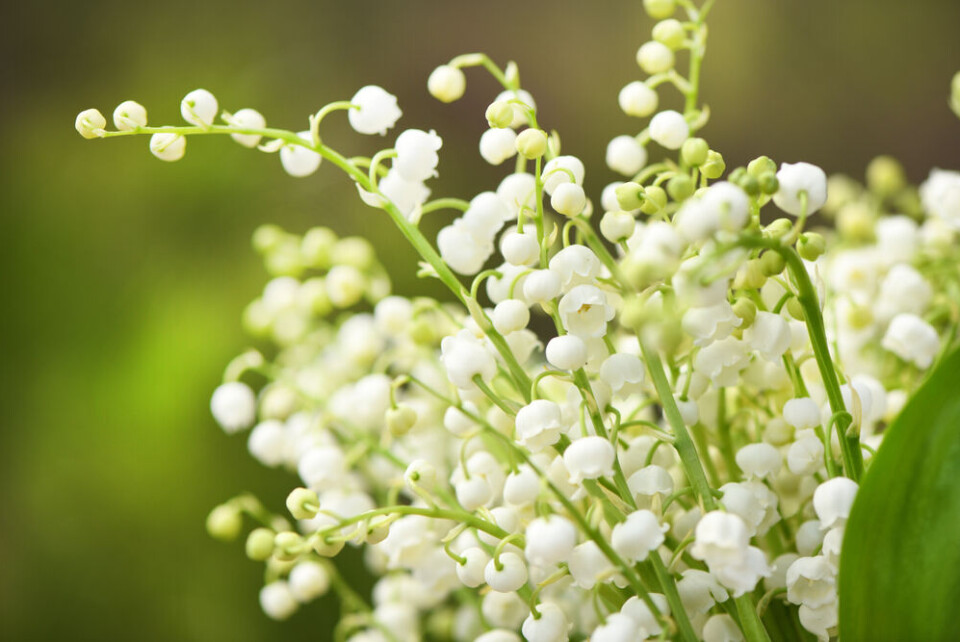-
Explosion at chemical plant near Lyon: where are other ‘at risk’ sites in France?
An estimated 2.5 million people live within a kilometre of a French Seveso site
-
Farmer blockades to continue on motorways over Christmas in south-west France
Protests are being maintained on the A64, A83 and A63 and on departmental roads
-
Interview: UK-France relations will only get stronger this year says new British Ambassador
The Connexion speaks to Sir Thomas Drew, who took up the role on September 1
French producers struggle to slow lily of valley bloom ahead of May 1
The white flower, which is traditionally sold and given on the May public holiday, has been blooming too early this year, and a lack of seasonal workers has also affected the harvest

Lily of the valley flowers have bloomed early in western France, with producers struggling to slow their development and harvest properly ahead of their traditional flowering day of May 1.
The flower, called ‘muguet’ in French, traditionally blooms best in the countryside around the western city of Nantes (Loire-Atlantique).
This year, around 85% of the blooms have already flowered early, well ahead of their usual ‘big day’ on May 1, when they are traditionally sold and given as gifts on the annual Fête du Muguet.
May 1 has been a public holiday in France since 1947, and in the 20th century also became associated with celebrating workers’ rights.
Read more:France's other May Day tradition
Read more:A brief history of the May 1 holiday in France
Blooms usually begin from April 19, but professionals estimate that their season has come four to five days early this year, due to recent high levels of sunshine and mild temperatures.
Producers are trying to preempt more early flowering, and aiming to protect existing blooms as May 1 approaches. This includes using cold water and fridges, and identifying the best time to harvest the blooms, as a “too-ripe” flower will continue to bloom after picking, and will therefore not keep well.
One harvest team manager, Julien Langlais, told France 3 that producers had learned a lot about the process since the similarly-early flowering of 2011.
Another producer, Yvonnic Perrin, explained that the flower is like a “kitchen ingredient”, and must be picked at the right moment. When to pick depends on the weather, and requires keeping a watchful eye on each stem, which may flower at slightly different times.
To maintain colder morning temperatures, the plants are placed in isothermal white boxes until they arrive in the sorting and packaging shed.
One million plants lost
However, some producers have struggled to manage harvests this year, with one farm in Divatte-sur-Loire (Loire-Atlantique) being forced to leave a million plants to ruin after two-thirds of seasonal workers did not show up this year.
The SCEA Bouyer farm started seeing blooms at the ready-to-pick stage from April 13, said Louis Bouyer, causing a veritable “headache”. He said: “It’s tense, because they have to hold out until May 1.”
As well as the early flowering, the work has been made even more difficult due to a lack of workers, Mr Bouyer said. He said: “This is unprecedented. It’s the first time this has happened.”
The farm was expecting 240 seasonal workers to arrive for the harvest, but only 85 showed up. This meant that of 3.5 hectares, almost 1.5 hectares could not be harvested. The farm was even forced to buy blooms from other nearby farms in order to fulfil supplier orders. Some still had to be cancelled.
Mr Bouyer said that his farm was not the only one affected.
He said: “We are all in the same position. On some farms, some production lines have had to be closed. And it’s even more frustrating because the quality is good this year.”
Mr Bouyer usually produces 2.5 million to 3 million stems per year. He said that he has no definite “explanation” for why so many workers did not turn up, but he suspects that the coinciding of the early harvest season with the school holidays may not have helped.
He said: “They are generally young people, retired people, or those from the Romanian community who come to work [seasonally] the most.”
Lily of the valley is exported across France and into the Netherlands, while three quarters are sent to Belgium. Some are also sent to Martinique and French Guiana.
Four white bells
People in France spend millions on the flowers each year, and thousands of roadside stalls pop up to offer sprigs.
The perfect Lily of the valley flower has four “white bells”, and is traditionally picked by or on May 1, to coincide with their annual day.
Producers are now letting their flowers bloom slowly in fridges, where they will stay until their final arrival on shelves or market stalls, to preserve their longevity as much as possible.
The Nantes area produces 60 million such plants per year, with producers watching extremely carefully to ensure as many as possible flower come Sunday.
Related stories
A brief history of the May 1 holiday in France
Edible flowers in France: Pansies for the plate is a growing market
Gardening in France: The history of Toulouse's Parma violets
























